6 Issues That Often Arise When Growing Clematis, According To Specialist Growers

CLIMBERS > CLEMATIS > PROBLEMS

Elizabeth is a Permaculture Garden Designer, Sustainability Consultant and Professional Writer, working as an advocate for positive change. She graduated from the University of St. Andrews with an MA in English and Philosophy and obtained a Diploma in Applied Permaculture Design from the Permaculture Association.
Reviewed By PETER LICKORISH

Peter is a Horticulture Lecturer and self-employed Horticulturist, with a passion for diverse areas of the industry - from garden design to the science behind plant growth and propagation. He has completed the Royal Horticultural Society’s Master of Horticulture (MHort) Award and lectures on RHS courses at Bedford College.
Contributions From MARCEL FLOYD

Marcel has been growing and cultivating his own Clematis for more than 30 years; his nursery Floyds Climbers and Clematis release a new Clematis most years, with the most recent being Coconut Ice - a beautiful Tulip-shaped variety.

Peter is the third-generation Owner of specialist nursery Thorncroft Clematis who are 12 x RHS Chelsea Gold Medal winners and known worldwide for their expertise and knowledge in the field of clematis. Peter is also a sought-after public speaker on the topic of clematis and is a guest speaker for The English Garden School at Chelsea Physic Garden in London.
IN THIS GUIDE
CLEMATIS GUIDES
Clematis are popular climbers that can find a place in many UK gardens.
They can often be the right plants for the right places and thrive in our climate and most different conditions that we can provide.
However, certain growing problems can arise – and troubleshooting those problems will usually require observation skills; then trying to work out the root causes in order to fix them.
We take a look at some of the most common symptoms of issues that can arise when growing Clematis, including:
- Shoots wilting and dying back.
- Stems emitting a stinky ooze.
- Leaves coated with grey-white growth.
- Leaves with holes forming in them.
- Leaves becoming curled and sticky.
- Your plant failing to flower.
If you have encountered one or more of the issues above, read on to learn more.
1) Shoots Wilting & Dying Back
Sometimes, slugs and snails may feed on clematis stems, leaving them weak, pale and silvery in hue.
Young shoots may be damaged enough to wilt and die back.
Unfortunately, shoots that are wilting and dying back at the tips could also be a sign of a much more serious problem.
These symptoms can denote a problem with the roots and could be caused by diseases such as Phytophthora root rot or honey fungus.
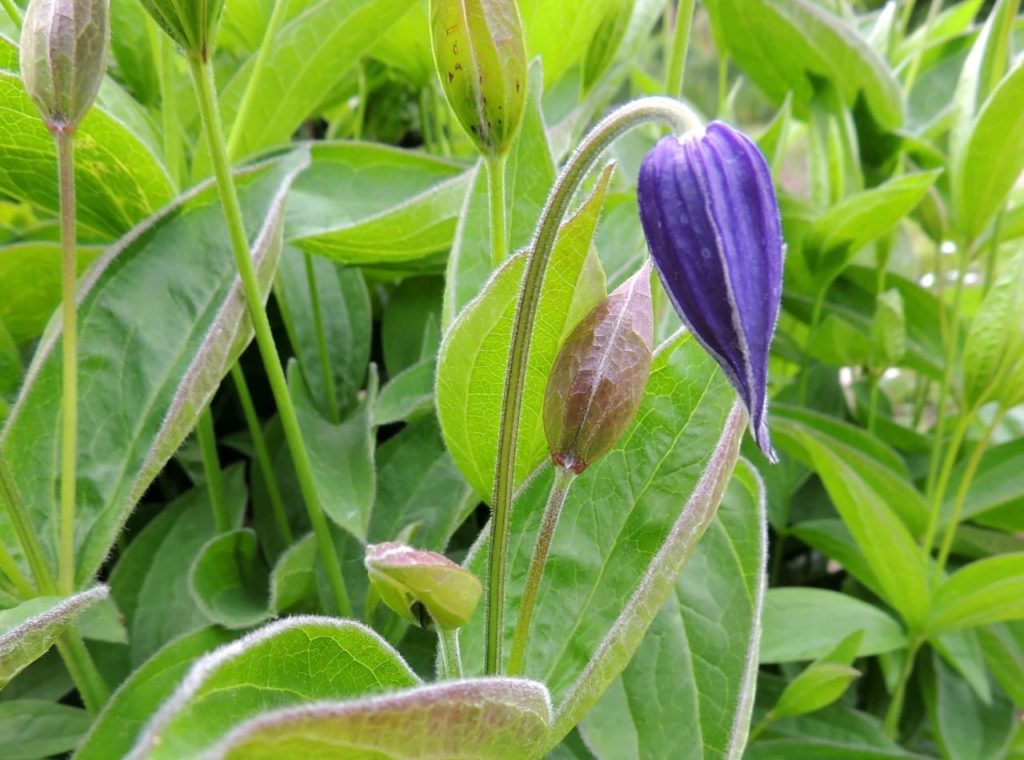
In container plants, roots may be damaged by vine weevil grubs.
Overwatering or waterlogging due to using too large a container or having poor drainage can also lead to roots rotting.
Sometimes, a clematis may also have shoots that wilt and die back at the tips when the soil or growing medium is too dry and hot.
“Although they love sunny conditions, consider sheltering their roots with a tile or other planting and remember that establishing Clematis are thirsty plants,” shares Master Horticulturist Peter Lickorish.
With large-flowered clematis hybrids, a fungal disease called clematis wilt could also be the problem.
However, don’t jump to the conclusion that this is what it is before you have ruled out the other potential issues above, as many species of clematis are resistant to clematis wilt.1Clematis wilt / RHS Gardening. (n.d.). Royal Horticultural Society. Retrieved May 10, 2023, from https://www.rhs.org.uk/disease/clematis-wilt
2) Stems Emitting A Stinky Ooze
If one of the stems of a clematis plant has died back and a stinky ooze is coming from it, this is likely a problem called clematis slime flux.2slime flux. (n.d.). Clematis on the Web. Retrieved May 10, 2023, from https://clematisontheweb.org/new-disease-slimeflux.cfm
This is a bacterial disease that can be fatal but, fortunately, it is possible to save the plant by pruning out the affected area.
Early signs of this problem include yellowing and wilting leaves in spring and early summer, often just on a part of the plant.
Occasionally, the clematis might fail to leaf out in the spring altogether.
The problem arises when a stem has been damaged and bacteria has got in.
Protecting plants from cold winds can help avoid this issue.
3) Leaves Coated With Grey Growth
One of the most common problems experienced when growing clematis is powdery mildew.
This is a fungal problem which causes a whitish-grey, dusty coating to appear on leaves, stems and flowers.
Powdery mildews affect a wide range of different plants, clematis included, and while a mild infection might not harm the plant too much, a severe one can dramatically restrict growth and vigour.
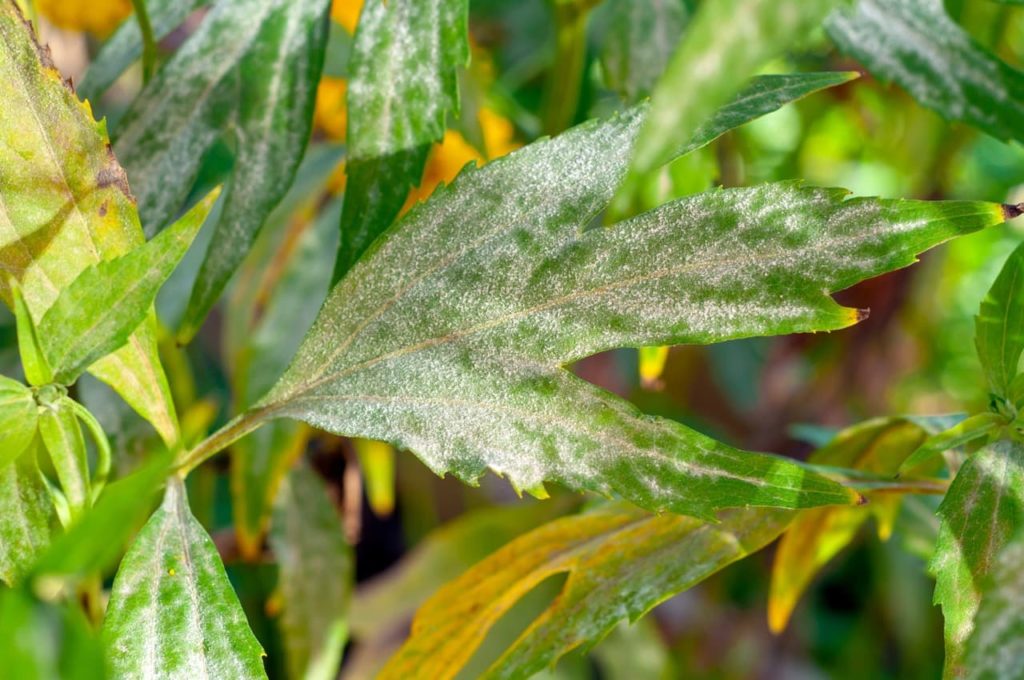
“Powdery mildew can be an issue, especially in newly planted clematis,” shares Peter Skeggs-Gooch, the owner of Thorncroft Clematis & Climbers.
“This strikes while the root can not sustain all of the top growth the plant has built up and can be rectified by pruning back the plant by as much as half and watering generously.
“Add Epsom Salts to the water once every couple of weeks for 1 month to improve plant health.”
As mentioned above, prune out affected shoots promptly to prevent the problem from spreading and clear up and dispose carefully of all fallen leaves to reduce the number of infectious spores in the vicinity.
“Too much shade and poor airflow can exacerbate the problem, along with plants suffering stress for a variety of reasons – such as not enough room for their generous root system,” says Peter.
4) Leaves With Holes In Them
If you find holes in the leaves of your clematis, then a number of insects can be to blame.
Lots of different species feed on these plants, including slugs and snails, earwigs and a number of moth caterpillars.
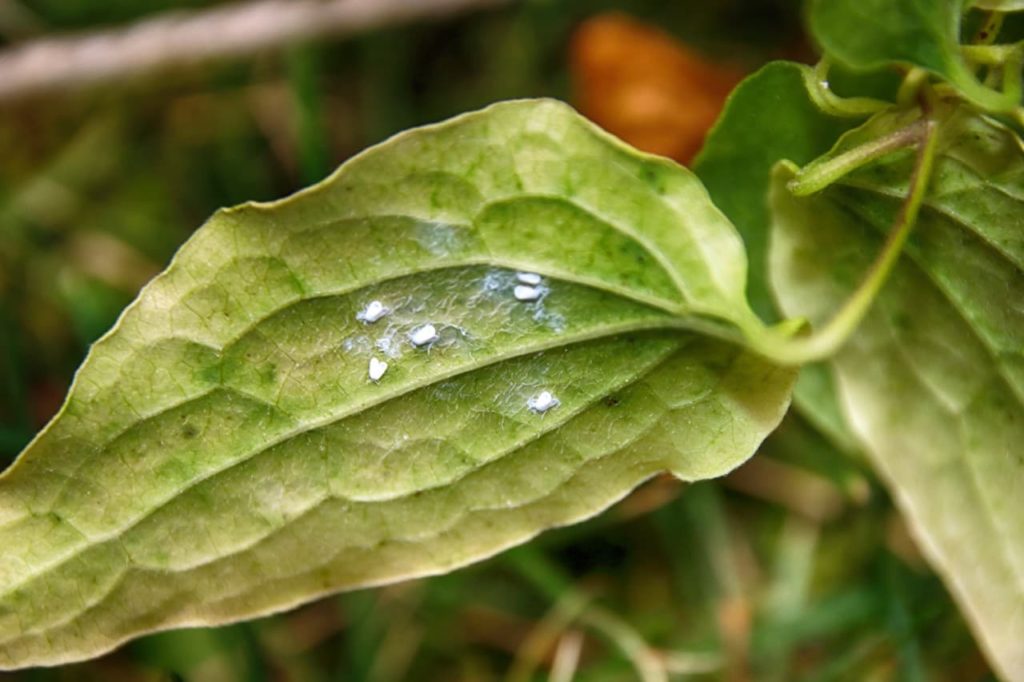
“I would say the most common problem is damage from slugs on the brand new shoots in the spring,” says Marcel Floyd, the Owner of Floyd’s Climbers and Clematis.
If young leaves have torn edges and little, brown-edged holes, then you might have a problem with capsid bugs.
Work on boosting biodiversity, as natural predation is generally the best way to deal with pests in any organic garden.
5) Leaves Curled & Sticky
Curled and sticky leaves on clematis are most likely to be signs of an aphid infestation.
The honeydew that these aphids excrete can also lead to sooty mould growth on your plants.
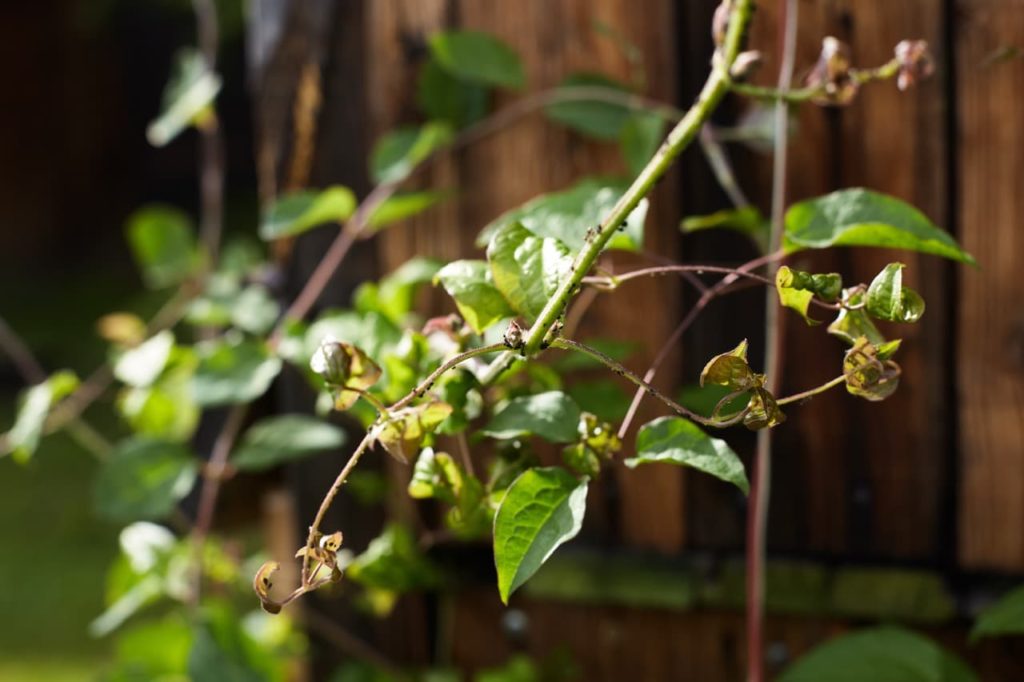
Aphids in a garden are not a problem per se, but they can be problematic if their numbers get out of control.
So, again, boost biodiversity and attract natural aphid predators, including ladybirds and blue tits, to your garden to keep everything in balance and aphid numbers under control.
6) Failing To Flower
If a clematis fails to flower, this is typically due to some problem with the environmental conditions.
Make sure that you have met the various environmental needs of the clematis you are growing.
Generally, clematis needs moist but well-drained soil.
They need to have their roots cool and shaded, but sun for the upper portions of the plant.
Too much shade can inhibit growth and flowering, so make sure your clematis has enough light, but cool shade for its roots.
“Young Clematis can be delicate, so I recommend keeping recently bought or propagated young plants in generous, but not overly large, pots until they have a few well-developed stems reaching at least 30-40cm,” advises Peter.
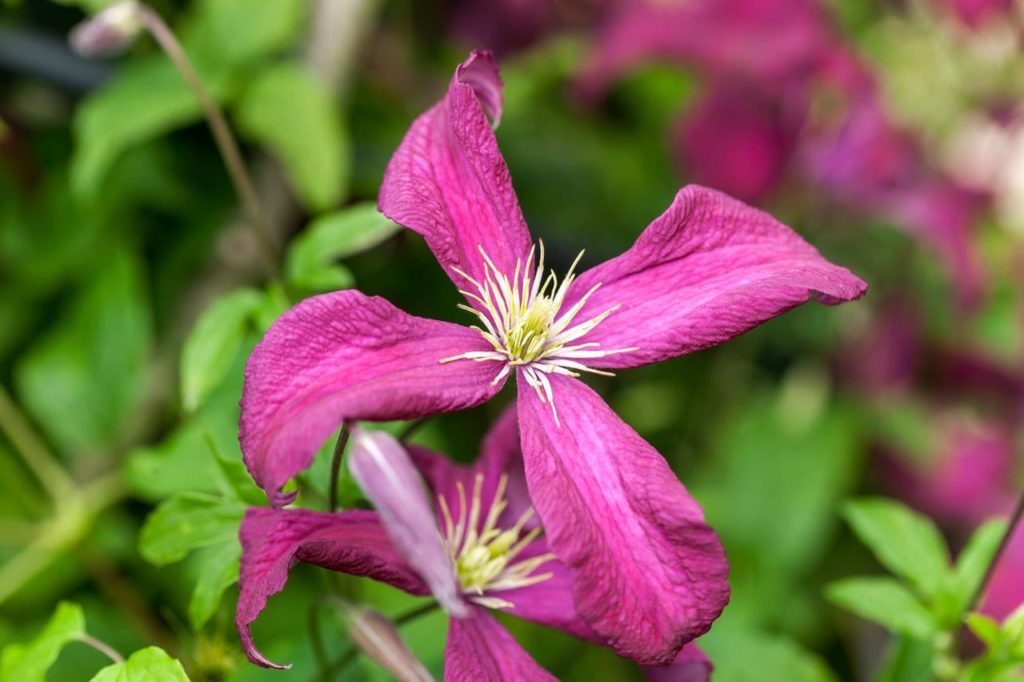
“This allows them to be planted around 5cm deeper than their level in the pot, which aids establishment and is a unique trick to Clematis.
“Planting them out at this stage helps them rise above dense borders – I have known them to simply be smothered and snuffed out by other plants if they’re not well established when planted.”
If environmental issues are not to blame, the lack of blooms on a clematis might be due to improper pruning.
Pruning at the wrong time might mean that you may have accidentally removed the part of the plant from which the flowers would usually grow.
If the clematis is in a perfect spot and you have not pruned wrongly, nutrient deficiency might be to blame and you may need to delve deeper into the nutrient content of the soil in order to work out what your plant is possibly missing.
There are, of course, other things that can go wrong when growing Clematis.
However, looking at the issues above will often help you find the cause of any growing problems or issues.
References
- 1Clematis wilt / RHS Gardening. (n.d.). Royal Horticultural Society. Retrieved May 10, 2023, from https://www.rhs.org.uk/disease/clematis-wilt
- 2slime flux. (n.d.). Clematis on the Web. Retrieved May 10, 2023, from https://clematisontheweb.org/new-disease-slimeflux.cfm
